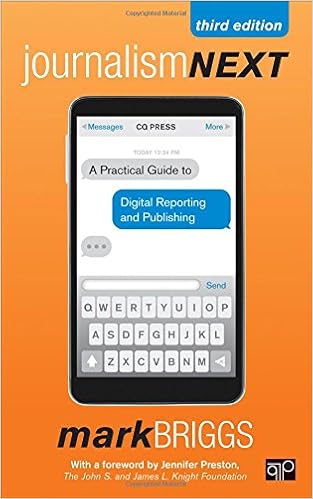By Jake Batsell
When I landed my first full-time reporting gig at The Seattle Times in the 1990s, the Times was still an afternoon paper. A big part of my entry-level GA job was chasing stories that already had appeared in the competition, the morning Post-Intelligencer. Many of my mornings began with an uneasy scan of the P-I, followed by waking up sources with pre-dawn phone calls and hitting the pavement to confirm details the P-I already had.
While I had plenty of friends from the cross-town rival and respected its journalists, as a whole I considered the P-I to be my personal nemesis. If I caught a glimpse of its rotating globe while walking around my neighborhood, I would sometimes reach out and pretend to crush it as I clenched my fist. And whenever I scooped the P-I, it brought a special spring to my step.
Thriving on competition, of course, was part of the fun in a two-newspaper town. And while those storied days are over in most cities, the cutthroat instinct still necessarily prevails in newsrooms paddling to survive in an ever-rising sea of news providers.
But over the course of the past nine months, as I charted the early days of The Texas Tribune for Columbia Journalism Review, I became a believer in cross-newsroom collaboration.
The Tribune, a nonprofit news startup, launched in November with an initial fundraising haul of about $4 million. It freely offers its content to any news outlet that cares to run it, and more than 250 websites and publications have pounced on the offer.
The state’s largest newspapers, however, have been slow to warm to the Tribune, even at a time when shrinking resources are forcing competing papers to share coverage. As I explain in the CJR story, The Dallas Morning News and Austin American-Statesman initially resisted publishing Tribune stories – partly, I suspect, out of pride, but also because editors felt the Tribune’s early content fell short of must-read status.
That perception began to change last month, when the Houston Chronicle teamed with the Tribune on a joint investigation revealing that disabled girls were pitted against each other in a “fight club” at a state-contracted facility. The Statesman and Morning News ran the story in their Sunday print editions, and both papers’ editors have since told me they can envision joining forces with the Tribune down the road. On certain hard-to-get stories, “two news organizations are certainly better than one in pursuing the truth,” said Chronicle editor Jeff Cohen. “We each bring passionate, enterprising reporters to a subject, and the beneficiaries are the voiceless of Texas.”
Robert Rivard, editor of the San Antonio Express-News, needs no convincing. He sent the Tribune a check as a founding member last summer and recently told me he hopes to team with the site in time for the November elections and January legislative session. “From the very beginning, I saw them as a partner and not as a competitive threat,” Rivard said. “We haven’t realized the potential of that collaboration yet … Some of the very best journalism being done out in the country these days is being done on a new model. It’s a model that we should embrace.”
As Rivard notes, Pulitzer jurors sent the news industry a clear message in April when awarding a prize to a masterful team project by ProPublica and the New York Times Magazine. California Watch has had notable early success collaborating with the state’s newspapers, and dot-org pioneer Voice of San Diego partners with the local NBC affiliate on a fact-check feature.
National Public Radio is getting in the act, too. “To increase our impact we at NPR have had to learn to get over ourselves, and to approach collaborations in a new way,” CEO Vivian Schiller told journalists at the IRE conference last month. (Also see: NPR CEO: We want to partner with journalism startups.) And the Seattle Times is among five news organizations joining forces with hyperlocal sites as part of J-Lab’s Networked Journalism Project.
During this new era of collaboration, news outlets also are partnering with universities – the New York Times and New York University are launching a local blog covering the East Village, and the Cronkite News Service at Arizona State University distributes student work all over the state. The student news site I advise at Southern Methodist University shares content with Pegasus News and the Morning News, and we’re talking with the independent student paper about combining operations.
I’m not sure what the business model of the future is, but having competing journalists duplicate each other’s coverage isn’t part of it. Yes, competition can be a motivating force, but teaming up to produce good journalism is an even better incentive.
Jake Batsell is an assistant professor in journalism at Southern Methodist University and faculty adviser to the Daily Mustang. You can read more from Jake on his blog and follow him on Twitter at @jbatsell.
 Mark Briggs
Mark Briggs  Posted in
Posted in 





I wanted to thank you for this fantastic read!! I certainly loved every bit of it. I’ve got you saved as a favorite to check out new stuff you post…
Sapid Agency is a Search Engine Optimization company in New York City that provides SEO Services. Their proprietary SEO strategies help struggling websites and aspiring business owners to rank their websites higher in multiple search engines like Google , Yahoo and Bing. They provide local and gmb map ranking for businesses in NYC and many other local areas. Find more at https://www.sapidagency.com/ @ 145 E 57TH NEW YORK, NY 10022, USA, +1 971 341 5608 USA
Spot on with this write-up, I truly believe this amazing site needs a great deal more attention. I’ll probably be back again to see more, thanks for the information!
Saved as a favorite, I really like your web site.